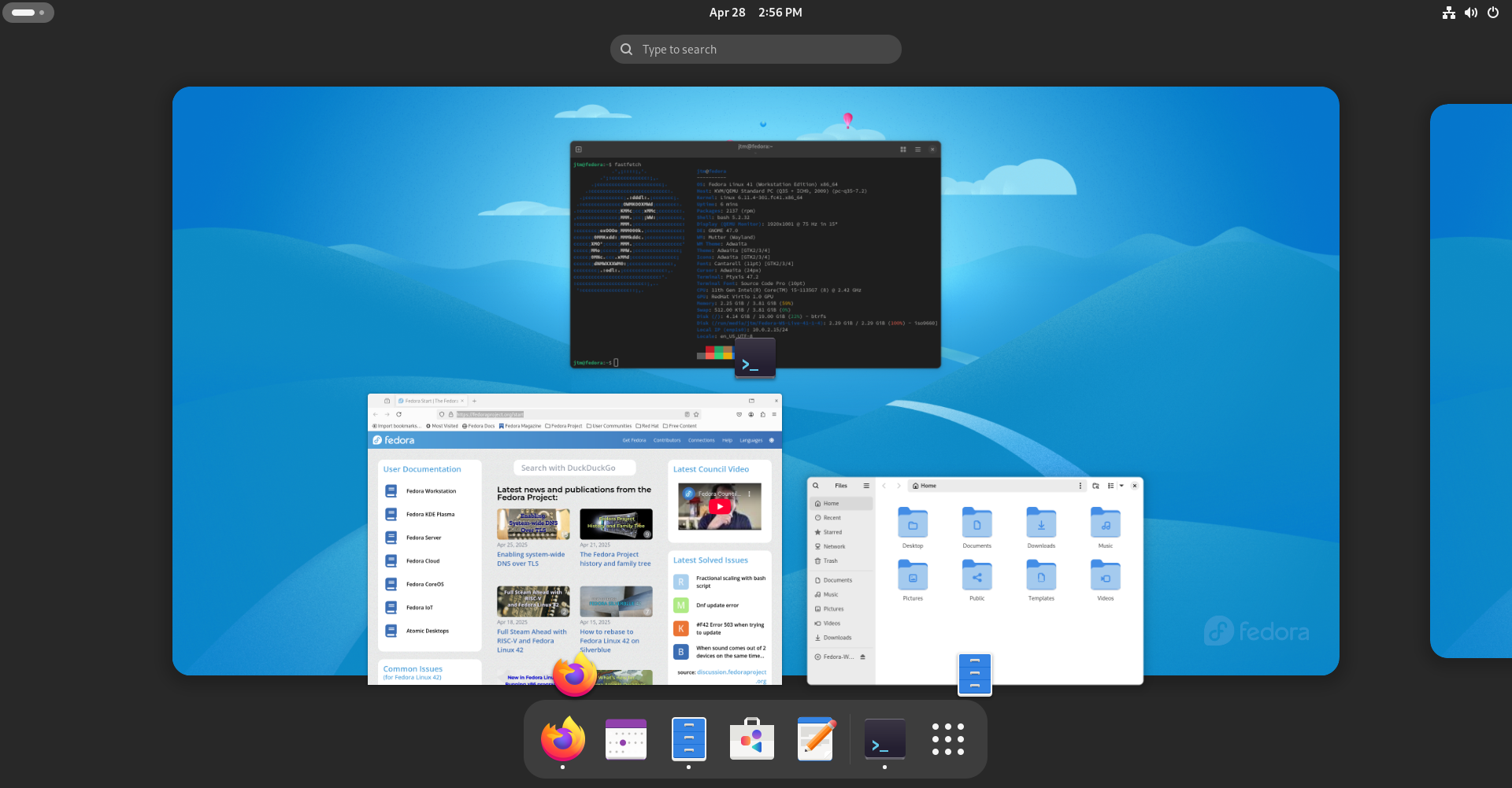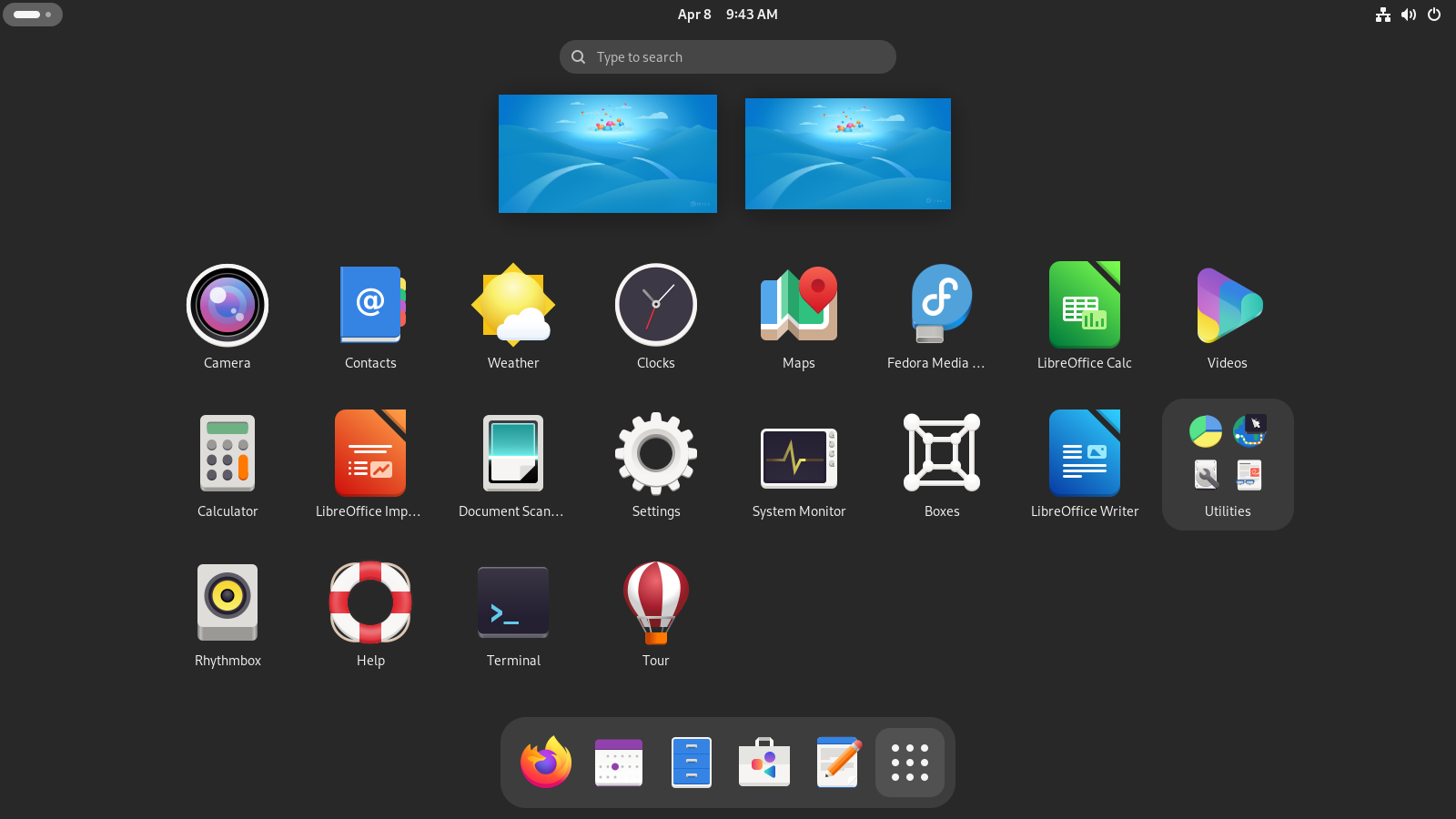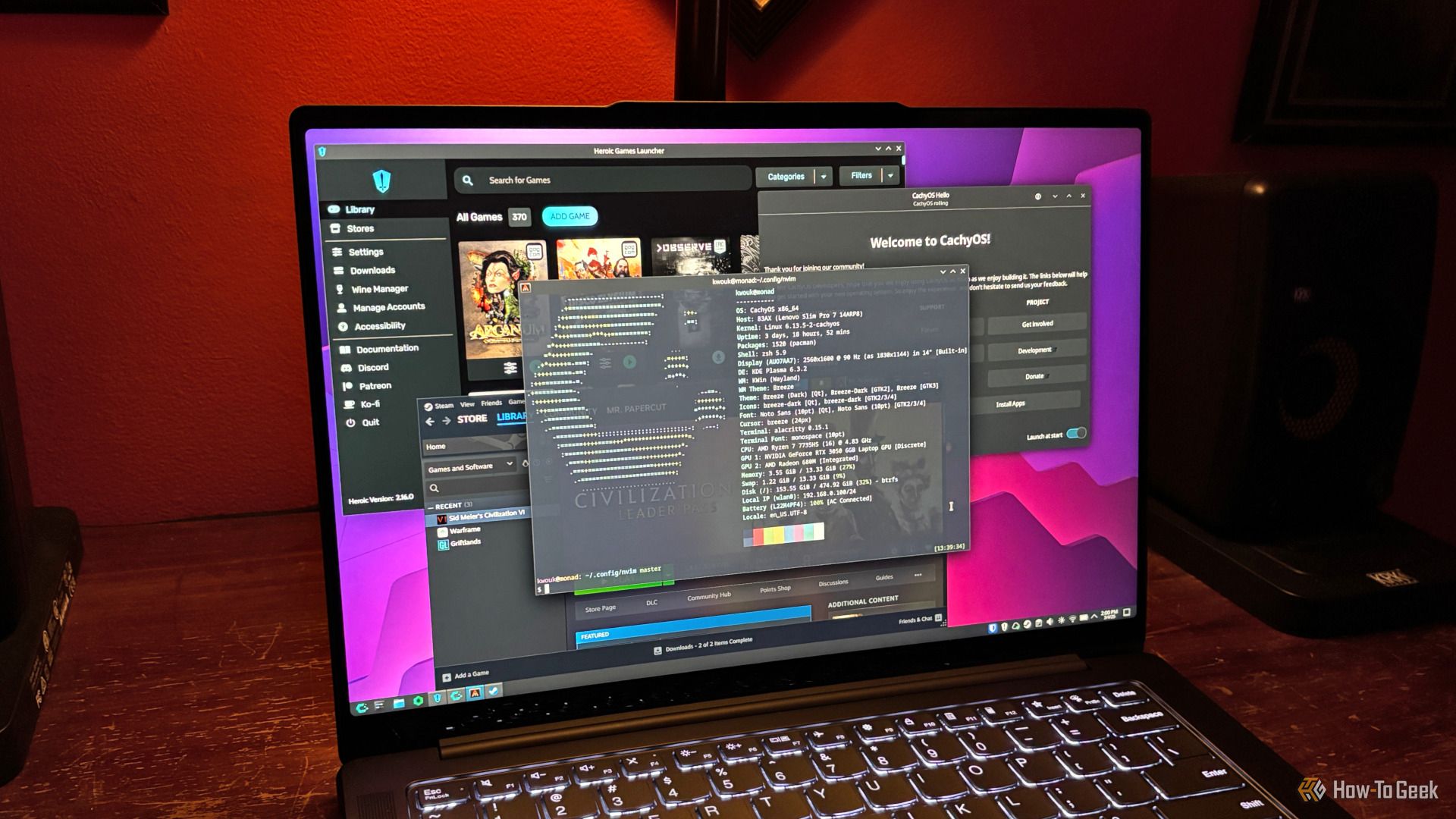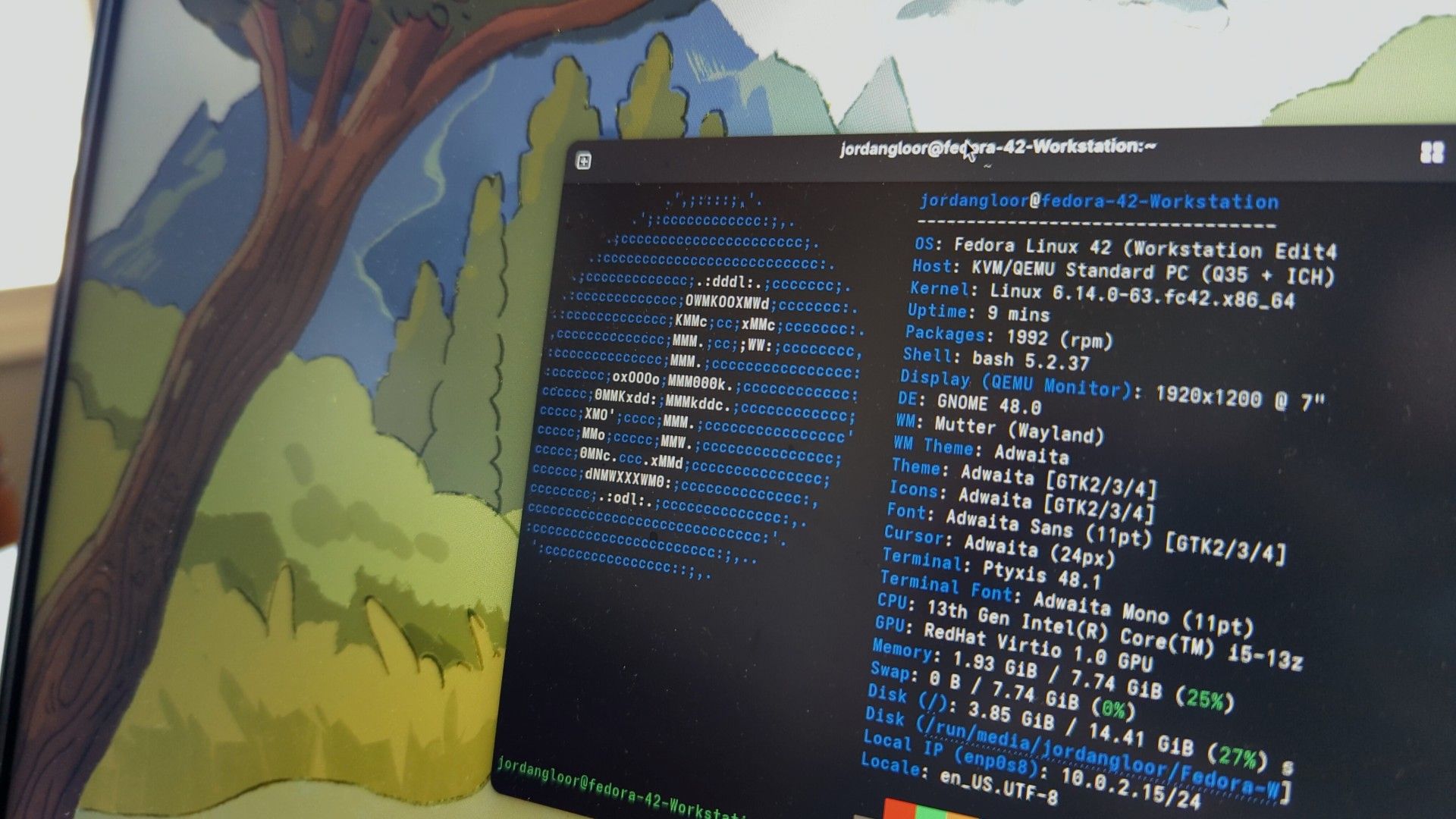Summary
- GNOME’s simplicity allows for a quick setup and seamless integration into different distributions.
- Extensive customization options are available for GNOME through gnome-tweaks and extensions.
- GNOME feels optimized for laptops, offering smoother performance and gesture-based controls.
While other desktop environments like XFCE and Cinnamon exist, GNOME and KDE are still the most popular options. Plenty of Linux users prefer KDE, but GNOME simply feels like home to me.
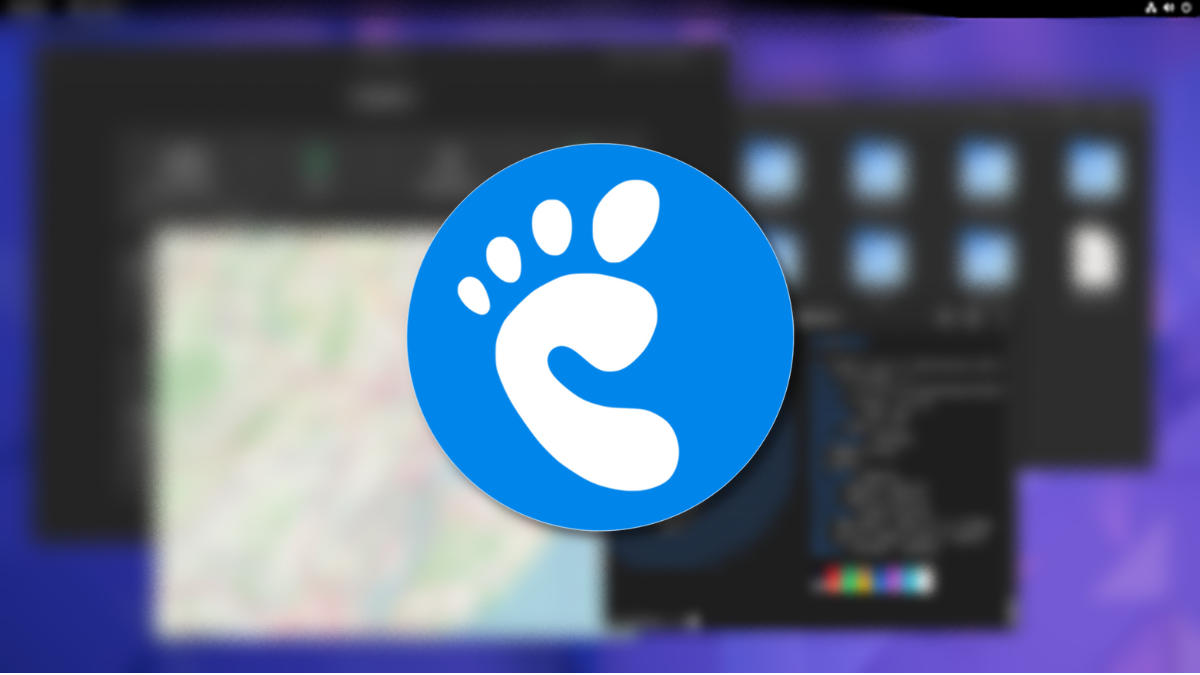
Related
Here’s everything you need to know about GNOME and its role in the Linux desktop.
GNOME’s Simplicity Is a Strength
In most cases, once you’ve logged into a GNOME session, you see a gray screen with your desktop floating over the top of it. If you’re new to GNOME, you’ll see a short intro to how to make your way around, but even this tutorial is relatively barebones, considering this is a full-fledged desktop environment.
While some people use this as a reason to install gnome-tweaks and start customizing, I prefer the simplicity. On one hand, this helps cut down setup time, since you’re not bothering with customization. On the other hand, this simplicity also helps GNOME fit it more seamlessly whichever distribution you may be using.
For example, a “vanilla” GNOME install as part of a Fedora installation leaves you with something very close to stock GNOME. Ubuntu, on the other hand, may be running GNOME in the background, but thanks to theming and other various UI tweaks, it’s almost tough to recognize that you’re running nearly the same version of GNOME.
Customization is Available if You Want It
While I may not be a personal fan of customizing GNOME—or really any full desktop environment—it’s certainly not just possible, but fairly extensive in terms of options. Anecdotally, I’ve also found GNOME to be marginally easier to customize from within the desktop compared to KDE.
We’re not just talking some custom themes or colors, either. For example, the PaperWM extension adds tiling, but with a twist. Instead of breaking your windows into bespoke workspaces, your desktop scrolls more similarly to the paper that the extension is named after.
Installing customizations is incredibly easy as well. You need to install gnome-tweaks (usually available in the official repositories), then to head to the Gnome Extensions website. At this point, it’s simply a matter of clicking on whichever extension you want to install.
I’ll admit, people seem to have issues with extensions not working after updates, but this is ignoring similar issues with KDE. In my experience, I had multiple KDE plugins, and even simpler options like wallpaper, simply fail to download within the KDE interface.
GNOME Interface Works Better on Laptops
Load up your typical KDE session and you’ll find an interface that sticks fairly close to what we think of the traditional desktop paradigm. This works great if you’re using a desktop PC, or a workstation laptop that feels more at home on a desk than it actually does on your lap.
GNOME, on the other hand, feels more optimized for laptops. I can’t imagine using it on a tablet or phone—at least in the near future—but on 14-inch laptops and smaller, GNOME feels somewhat smoother. The gesture-based controls aren’t extensive, but they provide just enough handy ways of getting around.
Thanks to strides made by the Wayland project, HiDPI support is present and relatively straightforward for both GNOME and KDE. That said, I’ve noticed fewer issues with DPI scaling on GNOME than I have with KDE.
GNOME Feels More Stable than KDE Plasma
This section is strictly anecdotal, but having recently run several KDE-based distros in addition to my usual daily driver of Fedora, I’ve noticed significantly more issues when running KDE. There could be a few reasons for this—chiefly that Fedora releases see heavy testing before release.
My main daily driver outside of Fedora has been CachyOS, which is based on Arch, but also has numerous tweaks applied. Still, the number of bugs I encountered had me thinking of the much earlier days of Linux, when distro-hopping was simply part of getting a reliable system up and running.
Because of individual hardware differences, various software versions, and the quantum makeup of the universe, I’m sure plenty of people have similar stories going in the opposite direction. Still, this has been the case in my experience with GNOME.
GNOME Stays Out of Your Way
Perhaps one of the biggest compliments I can pay to GNOME is that—as mentioned earlier—I rarely think about it. The keyboard shortcuts may not be enough out of the box to satisfy the window managers set, but they make enough sense that I never need to look up what a given key combo is going to do.
When you run a distribution that uses KDE by default, it’s fairly obvious that you’re running KDE. Yes, you can add all sorts of customizations, but you’ll probably still end up with recognizable KDE elements. With GNOME, I tend to focus on what I’m working on, rather than the software at hand.
While I’m a GNOME fan, there are plenty of options available for a desktop environment. If you want to open your options to window managers, you’ve got more setup work ahead of you, but plenty more options. Choice is one of the best aspects of setting up a Linux system, so make sure to enjoy the process.


